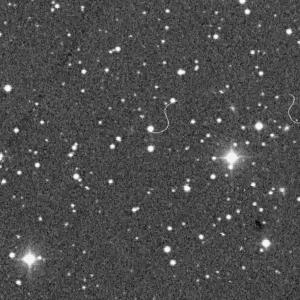IPs
V455 And
V515 And
AE Aqr
FO Aqr
V349 Aqr
XY Ari
V405 Aur
V647 Aur
HT Cam
MU Cam
DW Cnc
BG CMi
V709 Cas
V1025 Cen
V1033 Cas
TV Col
TX Col
UU Col
V2069 Cyg
V2306 Cyg
DO Dra
PQ Gem
V418 Gem
DQ Her
V1323 Her
V1460 Her
V1674 Her
EX Hya
NY Lup
V2400 Oph
V2731 Oph
V3037 Oph
V598 Peg
GK Per
AO Psc
HZ Pup
V667 Pup
WX Pyx
V1223 Sgr
V4743 Sgr
CC Scl
V1062 Tau
EI UMa
AX J1740.1
AX J1832.3
AX J1853.3
CTCV J2056
CXO J174954
IGR J04571
IGR J08390
IGR J15094
IGR J16500
IGR J16547
IGR J17014
IGR J17195
IGR J18151
IGR J18173
IGR J18308
IGR J19267
LAMOST 0240
PBC J0927.8
PBC J1841.1
RX J1804
RX J2015
RX J2113
RX J2133
RX J2306
Swift J0717
Swift J1839
Swift J2006
Swift J2138
|
V405 Aurigae = RX J0558.0+5353
Links to this object in
VSX
and in
Swift BAT 157 month survey

SkyView image
of V405 Aur (see important notes).
- Position
-
- Equatorial: 05h57m59.29s,
+53d53m44.7s (Gaia)
- Galactic: l=159.21, b=+14.31
- Finding Chart:
- Haberl et al (1994)
- Brigntness:
- Optical G=13.9 (Gaia); X-rays: 3.4x10-11 ergs cm-2s-1 (BAT 157m; 14-195 keV), 2.3x10-11 ergs cm-2s-1 (2SXPS; from a poor spectral fit)
- IP Credential:
- ***** (Ironclad) The spin period (or, usually, half the spin period) is
detected in multiple independent X-ray and optical observations. The orbital
period has accurately been established using optical spectroscopy.
- Periods:
-
- Orbital: 0.1726255 d = 4.143012 hr= 14914.84 s, seen in optical
spectroscopy.
HJD=2451838.048(5)+0.1726255(3)E
(Thorstensen et al. 2017)
- Spin: 0.06313 d = 9.091 min = 545.4555 s, seen in optical
photometry and hard X-ray light curves.
HJD(min)=2449689.573466(31)+0.006313154(3)E
(Skillman (1996))
- Others: In optical and soft X-rays, the dominant period is half the
spin period (272.7277s).
- Inclination:
- ?
- Distance:
- 658.2 (649.7-666.7) pc (Gaia EDR3; parallax: 1.483+/-0.018 mas)
References
- Haberl et al. 1994 (X-rays and optical)
- Haberl & Motch 1995 (X-rays)
- Ashoka et al. 1995 (optical photometry)
- Skillman 1996 (optical photometry)
- Allan et al. 1996
- Shakhovskoj & Kolesnikov 1997 (optical photometry & polarimetry)
- Hellier, Mukai & Osborne 1998 (X-ray spectroscopy)
- Still, Duck & Marsh 1998 (optical spectroscopy)
- Ezuka & Ishida 1999 (X-ray spectroscopy)
- Harlaftis & Horne 1999 (optical spectroscopy)
- Szkody, Armstrong & Fried 2000 (extreme ultraviolet and optical)
- Ramsay 2000 (X-ray spectroscopy)
- de Martino et al 2004 (X-rays)
- Evans & Hellier 2004 (X-rays)
- Sing et al. 2004 (UV spectroscopy)
- Suleimanov, Revnivtsev & Ritter 2005 (X-ray spectroscopy)
- Parker, Norton & Mukai 2005 (X-ray timing)
- Evans & Hellier 2007 (X-rays - soft component search)
- Piirola et al. 2008 (polarimetry)
- Brunschweiger et al. 2009 (X-rays)
- Scaringi et al. 2010 (X-rays)
- Froning et al. 2012 (far ultraviolet)
- Godon et al. 2012 (far ultraviolet)
- Tutar & Rennan 2013 (cyclotron hump modeling)
- Breus et al. 2013 (optical photometry)
- Pretorius & Mukai 2014 (space density)
- Sanad 2015 (ultraviolet)
- Barrett et al. 2017 (radio)
- Thorstensen et al. 2017 (orbital period)
- Schwope 2018 (space density)
- Suleimanov, Doroshenko & Werner 2019 (X-ray spectroscopy)
- Shaw et al. 2020 (X-ray spectroscopy)
Please send your comments, suggestions etc. to
Koji.Mukai@nasa.gov
and/or
Koji.Mukai@umbc.edu
|



